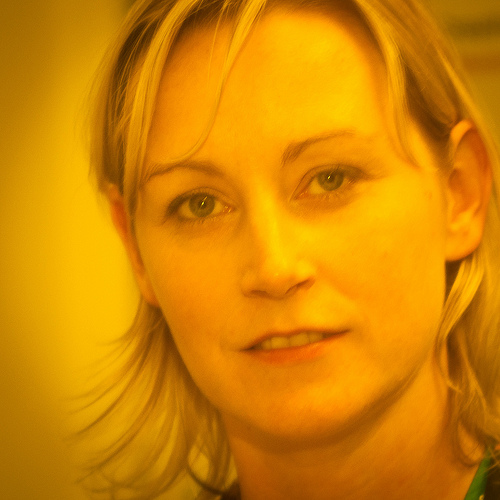Cheap alternatives to expensive camera filters
There are a wide range of different photographic filters available. These filters usually screw on to the end of your camera's lens, and alter the image in some way. There are filters for darkening the sky, filters for cutting down on the light level, and filters for changing the color of an image.
But some of these filters can be quite expensive, so in this article I want to look at some cheap alternatives. Of course the alternatives aren't as convenient or as high quality as a proper camera filter. But if you can't afford the full price of a proper filter, a cheap alternative may well do the job.
Polarizing Filter alternative
A polarizing filter can be used to help cut down on glare in a photo, resulting in rich colors and deep blue skies. They can also be very useful for reducing reflections, for example when photographing through glass.
The cheap alternative to a proper polarizing filter is to use polarizing sunglasses. This will work best for cameras with smaller lenses though, such as compact cameras and mobile phones. It will work for some larger cameras, but it depends how large the lenses on your glasses are compared to the lens you want to filter.
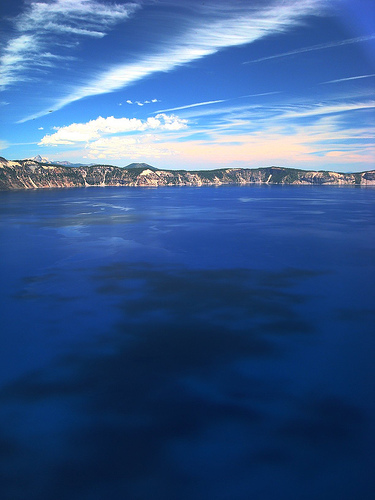
Crater by John Loo on flickr (licensed CC-BY)
Just hold one of the lenses of the glasses up in front of the camera lens to achieve the polarized effect. I wouldn't advise buying polarizing sunglasses specially to use instead of a polarizing filter (you can get the real filters pretty cheaply from ebay). But if you already have a pair of polarizing glasses, then they can act as a polarizing filter when you need one.
Bear in mind that most sunglasses are also tinted, and so will impart a tint to your photo. If you don't like the tint, you'll need to reduce or remove it when processing the photo later on the computer. If your camera supports it, you can set a custom white balance by taking a photo of a white sheet of paper with the sunglasses held over the camera lens. This should remove any tint in your photos from the glasses.
10 stop Neutral Density Filter alternative
A Neutral Density filter is used to cut down on the light entering your camera, allowing you to use a slower shutter speed. This is useful for long exposure photography, such as photographing the blurred motion of moving clouds and water.
Neutral density filters are available in a range of different strengths. The strength is measured in stops, with the strongest filters (e.g. Lee's Big Stopper and Hitech's ProStopper) giving a ten stop reduction in light. This means that if a shot needed a shutter speed of 1/250s with no filter, with the filter added you could reduce the shutter speed all the way down to 4 seconds for the same exposure. (For more about calculating exposure see Photography Basics – Exposure).
These 10 stop neutral density filters are very expensive, but there is a cheap alternative - welding glass. This glass is meant for use in welding masks and is very dark to protect the wearer's eyes from the brightness of the welding torch. Replacement welding lens glass pieces can be purchased very cheaply, either from a hardware store, or online from sites like eBay.
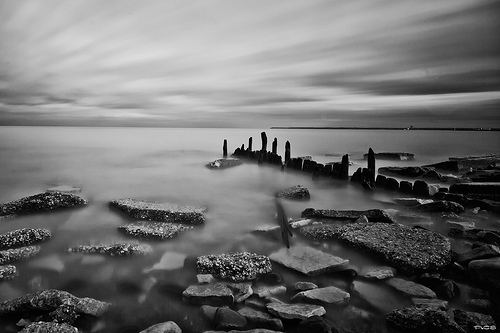
Shore of Ghosts (Explore) by CJ Schmit on flickr (licensed CC-BY-ND)
Welding glass is often tinted, so it does result in a photo with a strong color cast. This can usually be removed in software, or you can just convert the final image to black and white. A good tutorial on how to attach the welding glass to your camera for use as a filter is DIY Photography: Use Welding Glass As 10 Stops ND Filter.
Split Neutral Density Filter alternative
A split neutral density filter, or graduated neutral density filter, is a filter where half the filter is dark and the other half is clear. It is usually used in situations where there is a bright sky (e.g. sunrise and sunset). By positioning the filter so that the dark half of the filter covers the sky, you can get an image where both the sky and landscape are exposed correctly.
Graduated neutral density filters are available in a range of strengths. They are also available with either hard or soft transitions between the dark and clear areas of the filters. To buy a full set of both hard edge and soft edge grad NDs can cost quite a bit.
Instead, you can use a trick known as the black card technique
. You hold a black piece of card in front of your camera's lens to cover up the sky (or where you need the exposure reduced). During the first half of the exposure shake the card up and down a little bit to create a soft transition, and then remove the card completely for the remainder of the exposure.
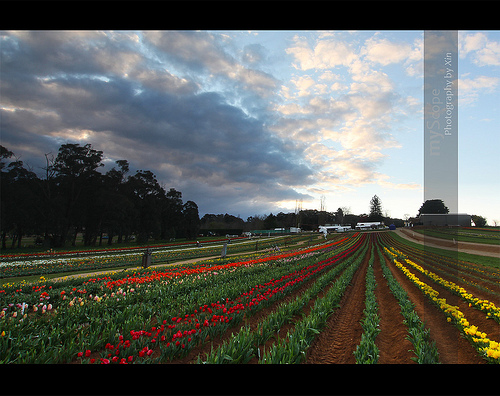
First shot using the black card technique by 三层游泳圈 on flickr (licensed CC-BY-SA)
This technique only works for longer exposures, if the total exposure time of a photo was 1/25s, you'd be hard pressed to hold the card over the lens for only 1/50s. But for multi second exposures (e.g. just as the sun is rising or setting, or twilight) the technique can be quite successful.
Protective filter alternative
Many photographers use a UV filter on their lens. This is not usually to block UV light, as most digital cameras are not sensitive to UV light anyway. Instead, the filter is used for protection. It means that if any dirt gets on the front of the lens, it will only be the filter that gets dirty, not the lens itself.
UV filters are also advocated as if something hits the front of the lens e.g. you drop the camera or a piece of gravel flies out from under a car's wheel at the camera, then the filter will get broken / scratched rather than the lens.
Because protective filters tend to be kept on the lens at all times, they need to be good quality filters so as not to introduce image quality loss or glare / flare from the filter. And good quality filters can be quite expensive.
For protecting your lens, a lens hood can often provide better protection. In addition, rather than introducing flare like a UV filter can when shooting with a light source just outside the frame, a lens hood can help prevent flare.
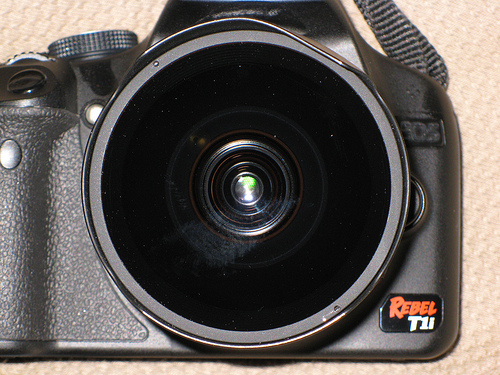
Lens Hood bended by daveynin on flickr (licensed CC-BY)
If your camera / lens didn't come with a lens hood, you can buy cheap third party manufactured lens hoods online. I wouldn't suggest purchasing official manufacturer lens hoods as these are usually very expensive for what is just a piece of moulded plastic.
Soft focus filter alternative
A soft focus filter is sometimes used for portrait photos to smooth the skin and give a slightly dreamy look to the photo. These filters are hardly ever used nowadays, since the effect can be replicated with greater precision in Photoshop. But if you want to try out this effect with a real filter, you can.
There are two cheap alternatives to a real soft focus filter. One is to stretch a piece of pantyhose / tights over the lens. The other is to smear vaseline on the front of the lens (or more preferably on a cheap filter or piece of glass mounted in front of the lens).
The vaseline method gives you more control over the blur. You can leave the center of the image clear and apply more vaseline towards the edges of the filter for a selective blur style effect.
Colored filters alternative
Similar to soft focus filters, it's very rare that anyone uses a colored filter on their lens as most effects can be replicated in software. However, if you did want to use a colored filter on your lens, you can just use a piece of colored cellophane instead of forking out for a proper color filter.
As I stated near the start of the article, the alternatives given here either aren't as easy to use or give inferior results compared to a dedicated photographic filter. But if you are only going to be using a filter for a few shots, or you just want to play with a technique, then these alternatives are well worth considering given the cost savings.
